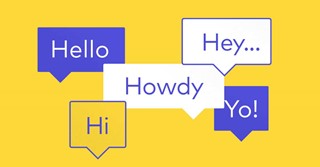“Just tone it down a bit will you, OK?”, the teacher growled in exasperation after Johnny had viciously yelled that “he could go to hell”. “We hope you have a pleasant stay in our boutique hotel”, smiled the receptionist to the guests in the lobby. “Hey Maggie, come over here and gimme a hug,” Louise called out when she ran into her friend on Trafalgar Square.
Can you hear them saying this? And more particularly can you hear how they are saying it?

Well that, dear friends, is what is called tone of voice. Literally. The tone people use to express themselves.
In the marketing and advertising world this term is used for the written tone of voice of a brand or an organisation. And it defines how you hear this voice in your head. ⚠️Brand voice and tone of voice are key parts of the DNA of your brand identity or brand personality.
We should point out that ‘tone of voice’ and ‘voice’ do not have the same charge:
- VOICE is what you say.
- TONE is how you say it.
WHY IS TONE OF VOICE SO IMPORTANT?
Consumers are ultra-sensitive about the way brands present themselves and about the nuances in the language used by brands to achieve this. Perhaps Johnny was given a second chance by the teacher, but if a visitor to your website is made to feel like he’s in kindergarten he will be gone in a flash. Bye bye, ciao, arrivederci any sales opportunity.

Consumers are human beings. They want to be spoken to in a language they recognise and that they are familiar with. Some of us may think we are rational thinkers, but the average mortal being is predominantly an emotional creature. If you want to generate the trust needed to persuade someone to become a customer, a fan or even an ambassador you have to create an emotional bond with the brand or organisation.
Embed this following message in your brain: people may rarely remember what you say, but they never forget their emotional reaction to what you said.
NO TONE OF VOICE WITHOUT BRAND IDENTITY
As we mentioned above, the notion of tone of voice is broken down into two charges: tone and voice. As a brand or company, it is important to first develop your own voice and only then can you determine how that voice will be received in certain situations.
The notion of voice ties in with your brand identity or brand personality. If you haven’t clearly defined it, you can’t make it sound (tone) right. So you first need to ask yourself what your company stands for or what your brand wants to communicate. Below are a number of questions that will help you with this:
- How would you describe your brand using no more than a dozen key words?
- What is the raison d’être of your brand?
- What is your mission?
- What is different about the way you operate?
- What values does your brand defend?
Or check out this formula: 👉 Which automobile brand, which Hollywood star or which animal is the best fit for your brand? If it is of any interest to you, Entre les lignes Agency is a Volvo with Meryl Streep behind the wheel and a labradoodle on the back seat.

Another tool for defining the personality of your brand is the brand personality spectrum.
Does your brand veer towards the casual or more corporate? Do you take a modern or a more classical approach? Do you position yourself as accessible to everyone or do you lean towards a specific and exclusive audience?

The greater the number of pink dots on the left, the younger, more modern and more innovative you will appear. If you have more dots on the right, you will exude a classic, traditional and professional image. Nothing is ever black or white of course. ‘Neutral’ is also a personality, just think of Switzerland.


